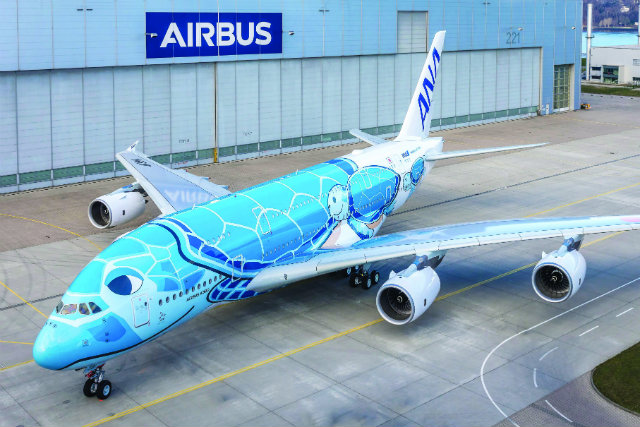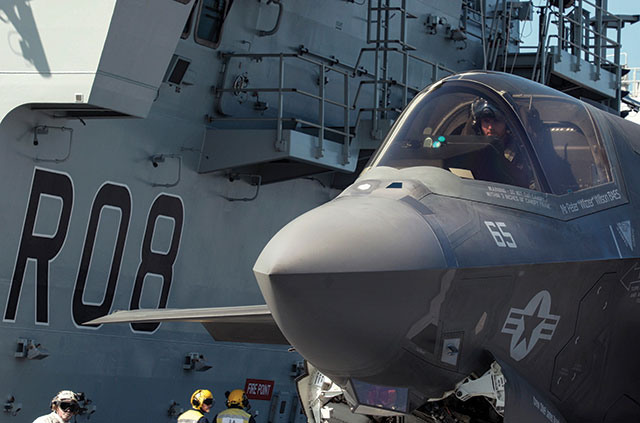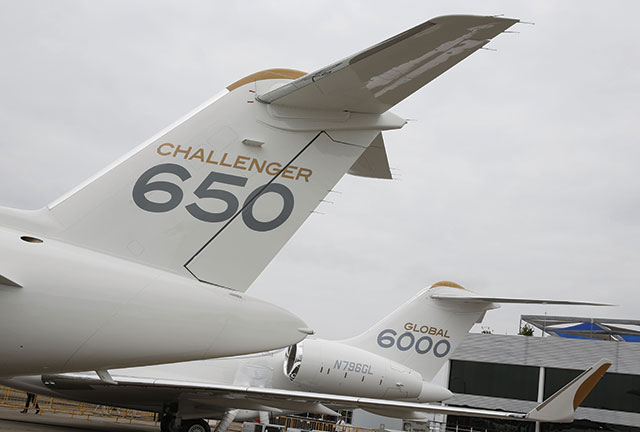The decade since Flight International celebrated its centenary in 2009 seems to have flown by – if you pardon the pun – and during this period there have been some key developments across the aerospace industry, as outlined elsewhere. But that poses the question: what could the next 10 years hold in store? Here, we present some potential advances across the industry that could play out during Flight’s 12th decade.
The air transport sector has experienced incredible growth since the magazine marked its centenary, sustaining levels that have surprised even the most optimistic forecasters. In the decade since January 2009, FlightGlobal data shows that Airbus and Boeing alone have delivered some 12,700 airliners – the vast majority of which have entered service with commercial carriers. To put it into perspective, that compares with 7,700 aircraft in the 10 years before.
What looks certain is that developments in the Asian markets will continue to be a key driver. Another source of huge growth will continue to be the low-cost carrier (LCC) phenomenon. This has changed the shape of the industry in the period and airlines’ behaviour when buying new aircraft.
For example, it has created greater demand than expected for single-aisle types such as the Airbus A320 and Boeing 737, to the detriment of larger aircraft. As the industry evolves over the next decade, this is likely to change again – and behaviour will likely influence the product development strategies of the OEMs.
“The LCC share of the fleet has increased from 15% at the end of 2008 to 23% at the end of 2018,” says global head of Flight Ascend Consultancy Rob Morris.
“The penetration of LCCs will continue to grow, driving increasing cost efficiencies for airlines and price opportunities for passengers. But environmental issues are likely to become increasingly significant and we will likely see increasing stringencies which may offset these cost efficiencies.”
CTAIRA analyst Chris Tarry predicts the LCC sector is heading for “a rendezvous with reality” in some of the emerging markets, however. “In terms of financial performance, it will largely depend on local economies which in the near term looks a bit challenging. The optimism of some observers will be replaced by realism,” he says.
The irony is that, from a “metal” perspective, the low-cost carriers have made a very successful business flying airliner designs conceived in very different eras. The world has changed dramatically since even the A320 was created, and these airlines will have a huge influence on the next clean-sheet airliner design, which is likely to be Boeing’s New Mid-Market Airplane (NMA).
Although a launch is not a certainty, the consensus is that the proposed type will come during 2019, which will enable it to begin making money for its customers within 10 years. It seems that every new airliner that comes along is promised to be game-changer and it remains to be seen if the NMA does become a reality, whether it will live up to its hype. What is certain is that it will have a ripple effect across the OEM sphere – both airframe and propulsion.
LONGER LEGS
“The NMA extends the reach of smaller aircraft, in much the same way the original Boeing 767 did on the North Atlantic,” says Richard Evans, senior consultant at Ascend. “The Middle East hub carriers would have the opportunity to use the NMA in many markets that currently have to be served using larger aircraft, just as an example.”
Morris suggests that Airbus’s evolution of its A321 single-aisle through its re-engining and greater range potential is already changing the game and influencing Boeing’s thinking. “To some extent, the A321LR is creating the potential to do that in medium-haul networks, which is perhaps why Boeing are being forced into the launch of the NMA,” he says.
What Airbus will do to counter the NMA threat is uncertain, but don’t be surprised to see a response based on the A321LR with more range – and perhaps – more capacity. A clean-sheet response is less likely, but cannot be ruled out.
Watching the battle play out at the higher end of the airframers’ product lines over the next 10 years will be fascinating. As Boeing charges forth with its 777X – due to enter service next year – Airbus may feel inclined to respond with an A350-based derivative. And can the market for new A380 superjumbos be sustained for another decade?
The global airline industry has enjoyed compound annual traffic growth over the past 10 years of almost 6%, which Morris explains means that the traffic base at the end of 2018 was 75% larger than it was a decade ago. But can this above-average performance be sustained?
“Although there are no signs of any fundamental weakening of the underlying drivers to this growth, it is inevitable that the pace will slow,” says Morris. “And then, given the point of maturity of the cycle and the enduring cyclicality of global economics and commercial aviation, at some point in the next few years there will be a downturn, which if it follows the shape of the last three cycles will include a short period of traffic decline globally.”
Tarry points out that there is a need to distinguish between volume growth and profitable growth: “It is clear the middle and latter part of this decade saw an alignment of favourable conditions – economic growth and a low oil price – and in 2015 resulted in record profits. But the inexorable increases in capacity and non-fuel costs are storing up problems.”
Morris expects to see the industry’s focus inevitably turning more towards the sustainability of the industry’s continued growth cycle, bringing emissions under increasing scrutiny. “So, in short, expect the next decade to see lower overall growth than the past decade – which is only to be expected in an ever-maturing sector,” he says.
Evans wonders how the formal introduction of the Carbon Offsetting and Reduction Scheme for International Aviation (CORSIA) emissions control framework could impact industry growth. “It must raise costs in some way, and could be another factor which leads to the use of larger aircraft,” he says.

Endangered species?
Airbus
RATIONALISATION
Tarry expects other recent trends in the airline industry to continue in the coming years, such as “portfolio airline” groups like Singapore Airlines and IAG that “enable businesses to profitably address different market segments – whether in terms of price or geography”.
Further airline consolidation is often seen as inevitable, but Tarry sees any lowering of the barriers to cross-border mergers as unlikely. “Any such investment is likely to be limited to taking stakes of varying sizes associated with a range of managerial influence. It may also be the decade when the role of, and benefits arising from, membership of multilateral alliances come under even greater scrutiny.”
As the airline landscape is evolving, so is that of the airframers and top-tier supply chain. “We are seeing consolidation and exit of several smaller commercial OEMs, which highlights the difficulty in competing with Airbus and Boeing,” says Evans.
Airbus triggered the recent action with its acquisition of control over the CSeries programme from Bombardier. Boeing followed suit with a deal to take over the Embraer commercial business. In this operating environment, what are the chances of insurgents like China’s Comac and Russia’s Irkut disrupting the Airbus/Boeing monopoly during the 2020s?
“The relatively elongated development of the Comac C919 and Irkut MC-21 single-aisles, and likely similar situation for Sino-Russian C929 widebody, suggest that these aircraft will remain niche players with limited penetration of export markets over the next decade,” says Morris.
And having the product is not enough, says Evans. “Support and in-service reliability have to be world-class too.” Credibility in this department is the first challenge – and one that Airbus was familiar with for many of its early years.
It is the powerplant that traditionally delivers the industry’s step changes in economic and environmental performance – and the next decade will be no different. It would be foolish to bet against another level of fuel efficiency being introduced by conventional turbofan designs in the coming decade, while serious progress will also be made in the development of hybrid-electric aero engines.
In defence, the big question is about what will come next in fighter development. The Lockheed Martin F-22 and F-35 programmes have set the standard for fifth-generation fighters. While the exact definition is hazy, “fifth-generation” generally encapsulates low-observable characteristics, the internal carriage of weapons, advanced sensors, and a seamless human-machine interface.
A “sixth-generation” fighter must have stealth, weapons bays, sensors, and advanced engines as a given. But what other new technologies will be incorporated? The coming decade will see more clarity on future air dominance capabilities, such as directed-energy weapons, doctrine involving the control of unmanned companion aircraft and exotic engine technologies that can operate comfortably at both high and low-speeds.
In Europe, UK forces will approach a key milestone next year when the F-35 is due to reach initial operational capability for the Royal Navy’s carrier strike combination on board HMS Queen Elizabeth.
As the 2020s play out, how the long-term landscape will look for Europe’s future fighter programmes should begin to emerge. There are currently two – and potentially three – stealth fighter products in the mix and it all depends on the next moves by the Franco/German Future Combat Air System project and how the UK’s plans play out.
Currently, the UK looks set to go it alone with the Tempest project, which BAE Systems unveiled at last year’s Farnborough air show as a possible sixth-generation fighter design for the Royal Air Force. Potential partners include the likes of Turkey, Japan or Sweden – with the latter also a potential candidate to produce its own independent platform.

HMS Queen Elizabeth, getting tooled up
Royal Navy/ZUMA Wire/REX/Shutterstock
VERTICAL INTEGRATION
Developments in vertical lift are also expected in the coming decade. The layout of military helicopters could see a revolution through the US military’s Future Vertical Lift (FVL) programme.
This high-stakes technology development competition could well determine whether US armed forces enter battle with a tilt-rotor aircraft, as proposed by Bell, or in a helicopter equipped with compound coaxial rotors that is propelled forward with a pusher prop, as proposed by a team comprising Boeing and Sikorsky.
Bell’s V-280, benefiting from learnings on the Bell-Boeing V-22 Osprey programme, has been flying for over a year, with the Texas-based manufacturer steadily pushing the performance envelope. While the Sikorsky-Boeing SB-1 Defiant will only start flying in 2019, Sikorsky has extensive experience with using a coaxial main rotor to generate lift, and a push propeller to provide forward thrust.
The stakes are high, with the eventual winner of the FVL likely to replace thousands of conventional helicopters while redefining rotorcraft capabilities.
Local bragging rights, a desire for high-technology jobs, and legitimate security concerns will see a golden age for fighters developed in the Asia-Pacific region over the next decade.
China will continue to make progress with its Chengdu J-20. The aircraft will see a major engine upgrades as Beijing improves on the propulsion front. Speculation has it that the AVIC/Shenyang FC-31 will find its future on board China’s growing fleet of aircraft carriers, replacing the heavy, trouble-prone Shenyang J-15.
Beijing’s neighbours, South Korea and Japan, are also committed to fighter programmes.
Korea Aerospace Industries (KAI) will progress with its K-FX fighter, which is being developed with substantial technological support from Lockheed Martin. This advanced jet will be superior to fourth-generation platforms such as the F-16, but less capable than fifth-generation types such as the F-35.
Tokyo, meanwhile, is determined to replace its Mitsubishi F-2 with a locally produced fighter. The nation’s Acquisition, Technology, and Logistics Agency (ATLA) continues to assess what an advanced Japanese fighter will need to operate in the tough North Asian environment. Tentatively designated the F-3, the programme will gain clarity in the coming years, with an eye to replacing F-2s from the late 2020s.
Innovation has always been at the forefront of business aviation industry, and the next decade will not disappoint. Much activity will be focused at the top end of the traditional business jet sector, where airframers are seeking the holy grail of super-large-cabin comfort and ultra-long-range travel.
Bombardier’s Global 7500 became the longest-range and largest-cabin business jet on the market in December 2018, following its entry into service, and the 7,700nm (13,900km) aircraft is sold out to 2022.
The Canadian airframer says it will turn its attention to the 7,900nm-range Global 8000 once production of its stablemate has ramped up. While some observers believe there is little appetite for this aircraft in its current form, Bombardier insists the programme remains part of its development offering over the next decade.
The Global 7500’s introduction has ended Gulfstream’s four-year reign at the top of the sector with its G650ER. While the 7,500nm twinjet has a significant lead time over its new rival, with an in-service fleet of more than 300 examples, and still commands impressive sales, Gulfstream is not resting on its laurels.
It could launch its answer to the Global 7500 as early as this year, which has a longer cabin and flies further than its flagship. The new model could be a stretched version of the superwide G600 – which is scheduled for service entry in the first half of 2019 – and will carry the G750 and G850 branding.
Dassault has made no secret of its plans to launch a family of superwide-cabin business jets based on its in-development 6X, which is slated for service entry in 2022. Its next project – which is likely to be unveiled in the next 24 months – could be a longer-range version of the 5,500nm-range aircraft, and called the 9X.
Embraer has also hinted at plans to add a long-range business jet to add to its eight-strong line-up, and a new project could make an appearance early in the next decade.
While new long-range and large-cabin aircraft programmes will be a dominant feature of business aviation over the next decade, supersonic aircraft will also make their mark as technology companies and start-ups pursue faster-than-sound flight projects that can alleviate the headache of the sonic boom.
NASA and Lockheed Martin expect to fly a demonstrator called X-59 QueSST in 2021, to measure communities’ perception of the noise made by its boom-suppressing shape. That data is due to be delivered to the US Federal Aviation Administration and ICAO in 2025, so they can in turn devise new rules, based on perceived sound levels, that may enable supersonic flight over land.
Sector pioneer Aerion broke a crucial barrier late last year when it laid down a firm timeline for first flight of its AS2 demonstrator in June 2023. By the end of that year, the company plans to cross the Atlantic at supersonic speed. The AS2 will be powered by GE Aviation Affinity – new class of FADEC-controlled medium bypass-ratio engines, unveiled last year. After a lengthy gestation, the project now appears to be accelerating, with certification planned for late 2025.
Fellow US-start-up Spike’s business jet plan calls for an 18-passenger jet capable of Mach 1.6. Like Aerion, Spike plans to fly the $125 million aircraft in 2023 with service entry expected by around 2025.
Colorado-headquartered Boom Supersonic is even more ambitious, promising to fly a supersonic demonstrator of its proposed M2.2 airliner this year. A business aircraft version will follow. If realised – and despite delays to the demonstrator programme, Boom is also talking entry into service in 2025.
But while an optimistic reading of these efforts suggests a return to supersonic flight is inevitable, even by the end of the decade, growing concerns about emissions and climate could prove the major obstacle for this nascent industry.

Gulfstream, Bombardier square off
Wallace Woon/EPA-EFE/REX/Shutterstock
MOON IN YOUR EYES?
An audacious prediction by President Trump at the end of last year promises some great progress in manned exploration of space in the coming decade. He stated that NASA, with help from private industry and fellow space-faring nations, would return to the Moon by 2020 and set up a base for pressing on to Mars. But even by Trumpian standards, that was overstretching reality.
Technically the Moon is, we know, possible – and Trump refrained from setting any realistic timetable or budget, so while 2020 is ridiculous, maybe 2025 or 2030 is doable. A 2020s Moon mission would almost certainly follow an Apollo-style architecture – efficient and proven – and exploit an extra 50 years of crewed flight experience and modern technology.
But it would be unwise to get any hopes up. Apollo happened in response to an existential geopolitical survival-of-the-technically fittest challenge and, once achieved, was ended with no follow-on – because there was no compelling political, scientific or commercial reason to continue with the monumentally expensive and dangerous business of sending astronauts into deep space. As former US president Barack Obama will have recognised, nothing is different today.
What has changed, though, is the independent technical capability of the private sector. Richard Branson’s Virgin Galactic programme looks to be have its long-sought goal of giving paying passengers a short suborbital ride within its grasp; likewise Amazon mogul Jeff Bezos’s Blue Origin. The long-awaited era of “space tourism” sub-orbital trips promises to be a step closer to reality, following the recent success in testing by Virgin Galactic’s SpaceShipTwo.
But anything more ambitious will hit the same cost-return buffer that grounded Apollo. Unless governments are paying with taxpayers’ money, it will not happen. That means it won’t happen for the foreseeable future.

Best seen through a telescope
Jamie Cooper/REX/Shutterstock
Source: Flight International





















